If I told you I wasn’t terrified, I’d be lying. But there was no turning back. For better or worse, for the first time, it was just the two of us and Windara. In a way, it was massively freeing. We didn’t have to wait for crew to arrive, and we didn’t have to worry about where and when we checked back into the US. But at the same time, there was no one to share the watches with or to help deal with things under way, and before now, our longest double-handed passage was 44 hours.
Our original plan was to depart on Monday, but as we pored over forecasts and weather routes Sunday morning, we realized a mid-day departure was the better plan. We quickly went from lazy Sunday mode to final prep mode. Once all the gear was stowed and our departure checklist complete, we hauled anchor for the final time in our 2024 Bahamas cruising season.
Based on forecasts and expected speed, our target destination was Southport, North Carolina, and the plan was to arrive on Tuesday to avoid some unpleasant weather that would roll off the coast in the middle to latter part of the week. From there, if weather looked ok, we’d make another short hop and end our vacation week in Beaufort.
We had beautiful sailing off the Bahama banks, and we spent the day soaking in the beautiful blues for one last time this year. We only saw one sailboat who overtook us (they were motor sailing), Fly Away, who we spoke with briefly on the radio and learned was making the straight shot around Hatteras and up to Newport, RI. No wonder they were in a hurry!
We exited the banks just before sunset, and I broke out the conch horn to celebrate the sun setting on a beautiful day and an amazing season. We continued to have perfect sailing overnight, and the Gulf Stream gave us a serious boost. When I took over the watch, we were already nearly even with Cape Canaveral.
In the morning, we had a visit from a tropicbird. I think he was trying to land on Windara, but each time we rolled and the sail slatted, it spooked him. He eventually flew off, but it was so cool to have him circle us over and over.
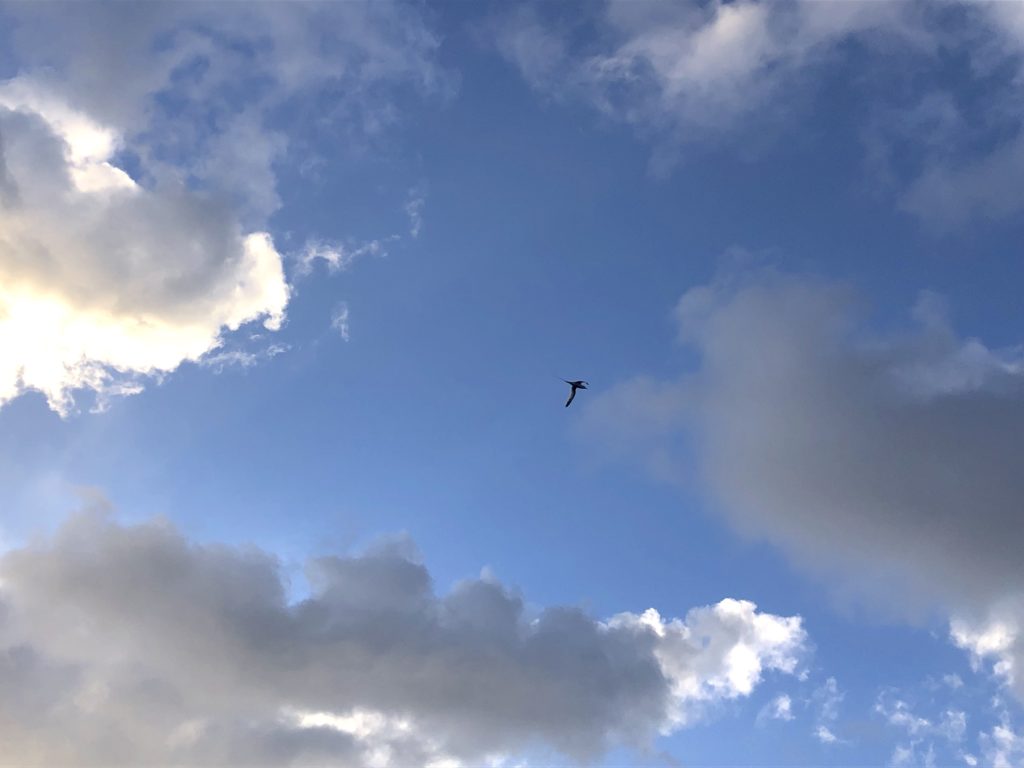
We’ve often been treated to the company of some playful dolphins on our journey, but this day in particular was amazing. The entire morning, we were rarely without the company of at least a couple Atlantic spotted dolphins, and each time, they’d stick around for at least a half hour or more. I sat up on the bow for a while to watch and get some video (harder than the YouTubers make it look… I was holding on for dear life with one hand (even though I was seated and tethered to the boat), GoPro in the other), and it was amazing to watch them play.
“Melissa, I need you on deck.” That’s how I was awoken early in my off watch, and it never means anything good. The wind hadn’t kicked up yet and the sky was still clear overhead, but there was a thunderstorm ahead. As Chris saw it approaching, he’d tucked in a second reef. Now he decided to drop the main – a wise call in case we were hit with an intense gust wall. In order to drop our main, you have to climb two steps on our mast. It’s pretty precarious, and I don’t love the idea of him being up there at night on open ocean, but there wasn’t a better alternative. I brought us up into the wind and we got the sail down safely. I could see the squall in the distance, and it was an incredibly active cell, but it was still over land and to the north of us. “What if we turned away from it?”
Obviously we didn’t want to go farther out to sea, and it made no sense to double back and fight the Gulf Stream, but if we headed straight at the coast, we might be able to let it pass ahead of us. That would cost us significant time – both in the time spent closing with the coast and in the loss of the 2-3kt boost we were getting from the Stream. But if it worked as I hoped, it would also mean Windara was safe.
As a precaution, the Iridium and one of the handheld VHF radios went into the microwave, and a second VHF went into the oven. If things didn’t go the way I’d hoped and we got struck, the hope was that we’d still have a way to communicate (the microwave and oven act as Faraday cages). We set up Starlink so we could track the storm on radar (it was too far out for our ship’s radar to track) and get a sense of what it was doing. Unfortunately it was tracking ever-so-slightly south as it came off the coast at Savannah and there were a couple little pop-up squalls rolling off the coast at Brunswick, but we were able to successfully slip between the two and the night passed without incident.
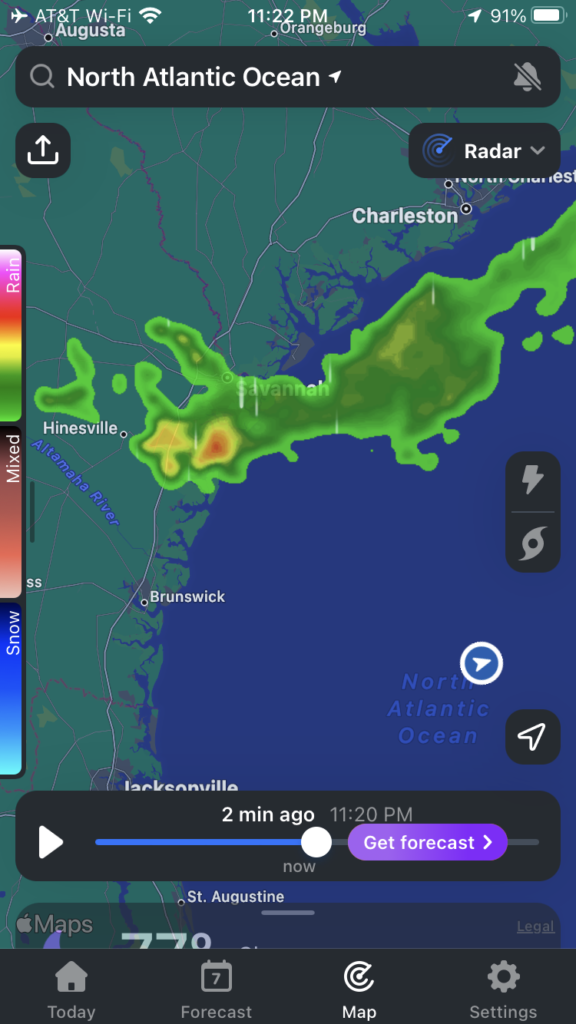
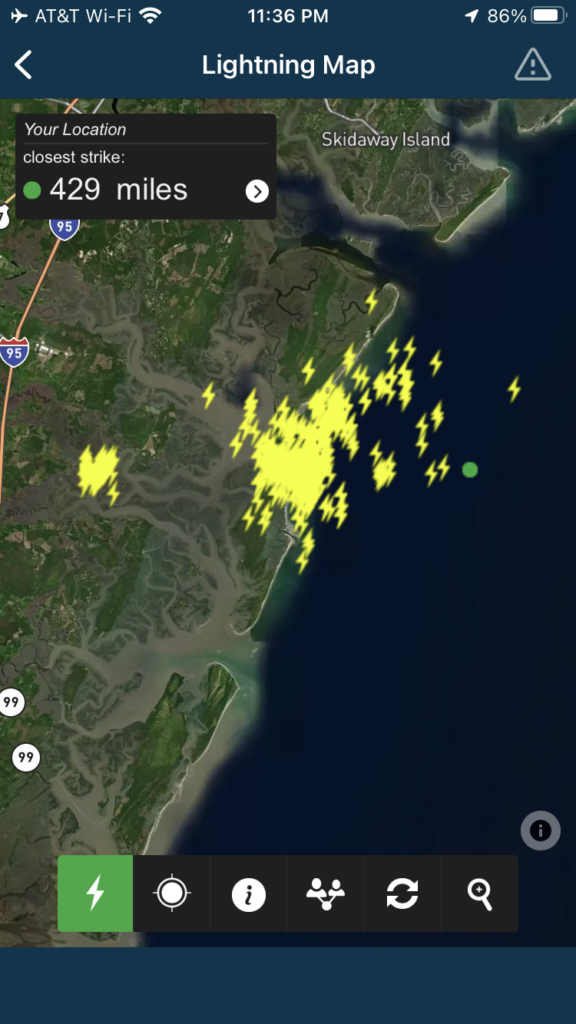
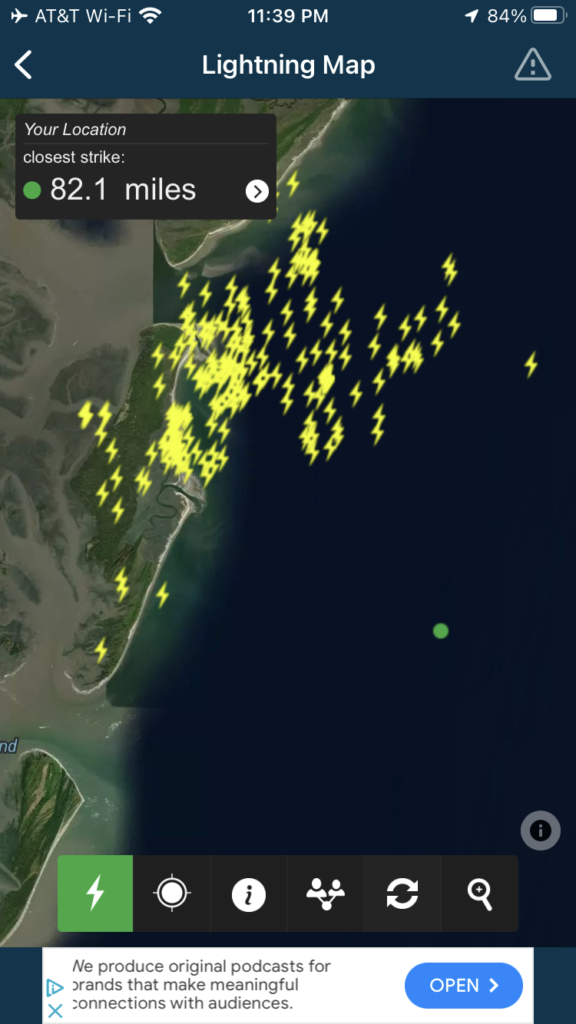
We agreed that with our current position and slower speed, we’d adjust our goal and aim for Charleston since there was more bad weather to come. In the morning we checked weather again, and the updated forecast looked like we had the weather to continue on to Wrightsville Beach, North Carolina. I was tired, and I was really looking forward to spending some time in Charleston. On the other hand, continuing on to Wrightsville Beach meant that we’d end the week in a much better position in our journey north. For the second time this trip, I forced the part of me that makes a plan and sticks to it aside, agreeing to continue on with the caveat that we’d continue to monitor conditions and make a final call when we were nearer to Charleston. At our final weather check off Charleston, conditions still looked good and we decided to press on.
Overnight we were rewarded with the amazing experience of watching dolphins race alongside Windara in the dark, their forms clearly visible in the vibrant bioluminescence. The breeze was up and down and a bit shifty, so we had a reef in the jib and were on the slow-ish side. I considered shaking it, but I knew it would wake Chris, and I figured it didn’t hurt to stay slow for a while. Besides, I didn’t want to roll out full sail and then have to reef again if it started gusting up – I was tired, so keeping it easy seemed like the smarter choice.
I’d hardly seen any other vessels since we left The Bahamas (Chris had a watch with a ton of commercial traffic our first night), and this was the only watch where I had to radio a ship – our CPA (closest point of approach) was bouncing around from just under a mile to only a couple hundred feet. Typically when I have a close CPA with a commercial vessel, I ask them how they want to handle any course alterations. This time we were sailing deep downwind and I would have had to gybe to clear them, so I asked them to alter their course to starboard, which they were kind enough to do, and we passed about a mile apart.
There’s so much of a passage that’s impossible to describe – you just have to be out there and experience it. I don’t have words to describe the way the color of the ocean changes from the banks of The Bahamas to the deep waters of the Gulf Stream or as it begins to get shallower as you approach the coast. I can’t explain the hours I spent watching the waves, the water forced aside by our hull, the splashes of spray flying or the trail of our wake. I can’t tell you why I laughed like a child when I looked over just as a dolphin jumped clear out of a wave beside Windara at sunrise. Before I started making offshore passages, I couldn’t comprehend the peace of a late night watch, the beauty of a truly dark sky, or the delight of watching bioluminescence for hours on end. I never imagined that not seeing another soul for days, and only seeing other ships miles distant, would feel comforting. So much work, planning, preparation, and mental capital goes into a passage like this, and then you’re constantly throwing those plans out the window as predictions and reality deviate from one another. But that’s also pretty liberating – to have the ability to adapt and go with the flow.
We did really well with our provisioning this year. We ate well on passage and had enough food pre-prepped that if we’d had rough conditions, no one would have been stuck in the galley cooking. And we ended up throwing out very little. We used up everything we couldn’t bring into the US first, and there were only a few things that had to go overboard. Since we have to be careful what comes back to the US food-wise, while we’re offshore, all food scraps go overboard along with most paper products. I’d already gotten rid of all meat packaging in The Bahamas, and most of the other packaging was from goods that were US-produced in the first place (and that all got carefully washed). Thanks to careful planning, we had very little trash to deal with.
The final hours of the passage were delightful. While we had 20 knots of breeze behind us, Windara was settled and comfortable. We were sailing fast, it was a beautiful day, and I was feeling good. Part of me didn’t want the passage to end, but there was the part of me that couldn’t wait to be anchor down. Still, it felt odd to pass the Masonboro Inlet sea buoy and know we were returning to civilization.
Our first attempt to anchor failed – there was so much clay on the anchor still from Great Sale Cay that the fluke couldn’t set. But the second time we chose a better spot and held perfectly. We both had our doubts, but after several minutes of watching various ranges, we were suitably convinced we were set. It was 77 hours from anchor up to anchor down, and honestly, I’m proud of myself.
I was nervous making a 575 mile passage without crew, but I felt like it was time to push myself a little, and I’m so glad I did. I’m working on so many “soft skills” as a sailor right now – planning but being willing to adapt plans based on conditions, learning to be okay with doing new things badly at first, and getting out of my own damned way when it comes to trying things. It’s a slow process and definitely not easy, but the rewards are absolutely worth it.
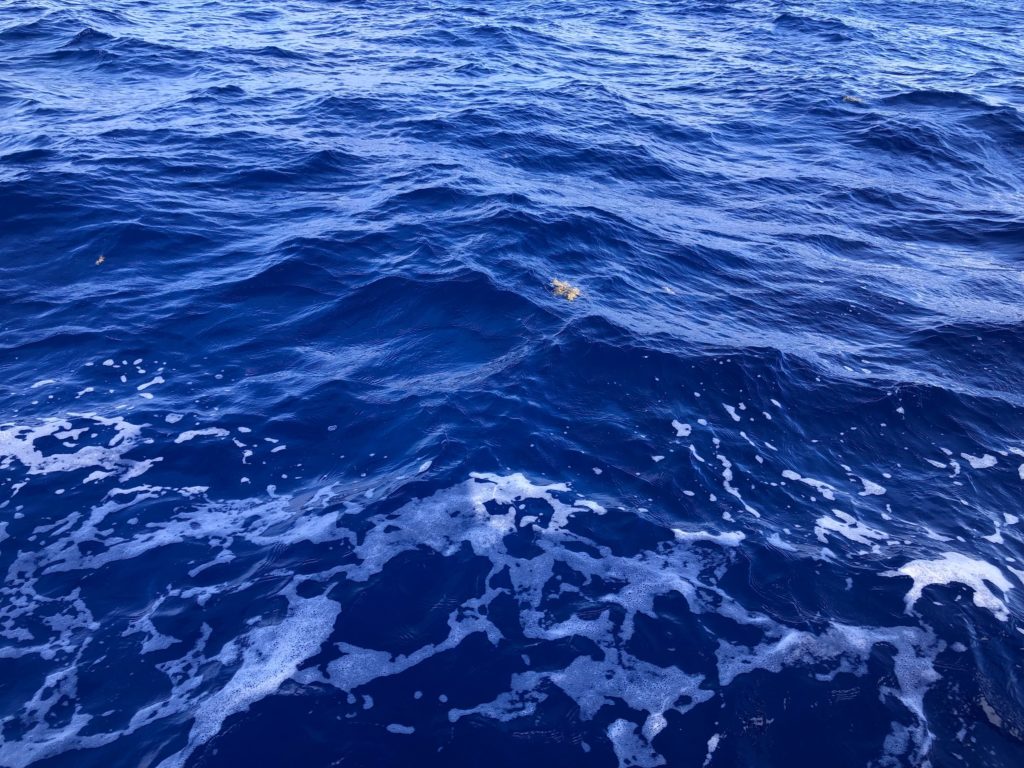
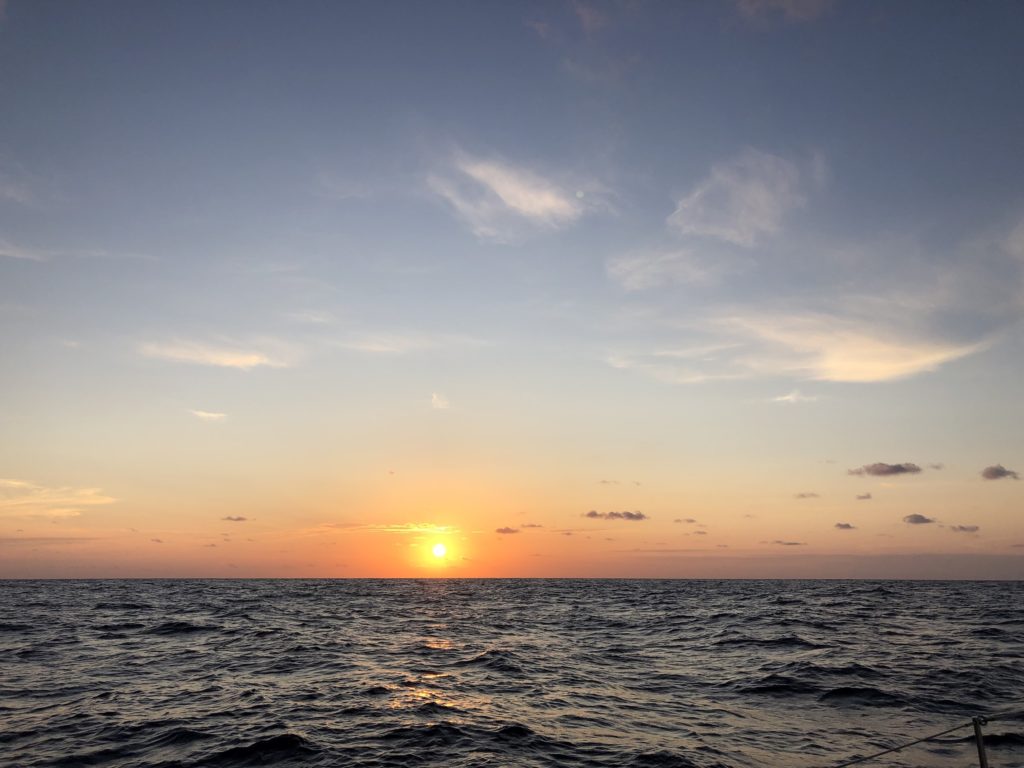
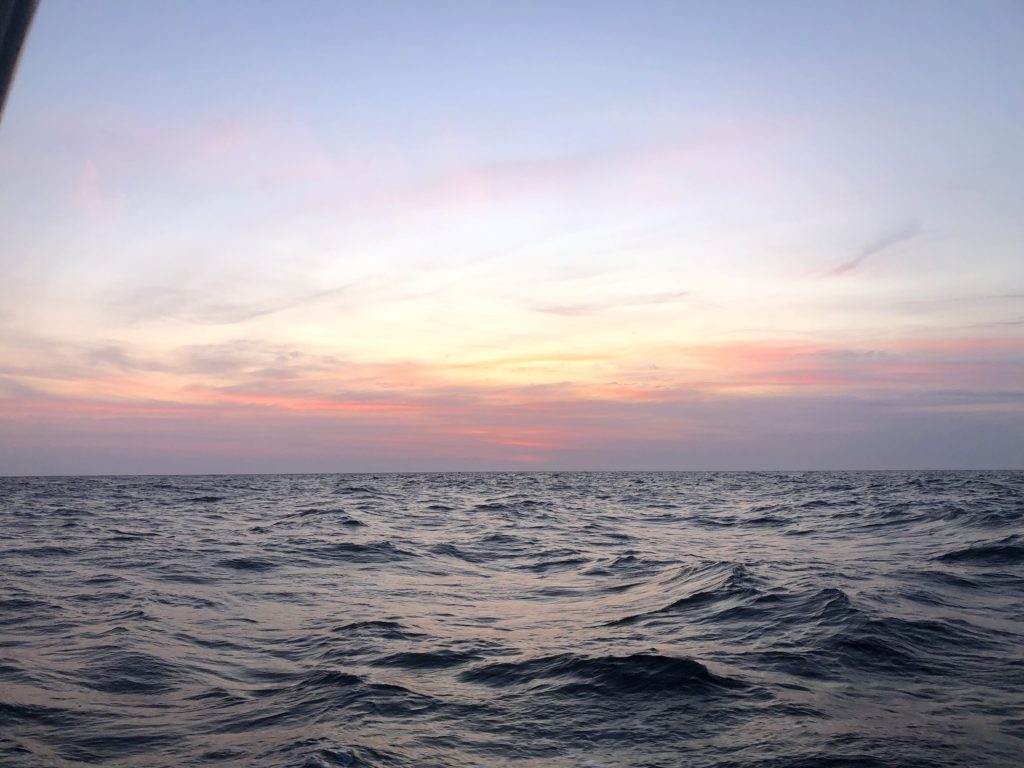
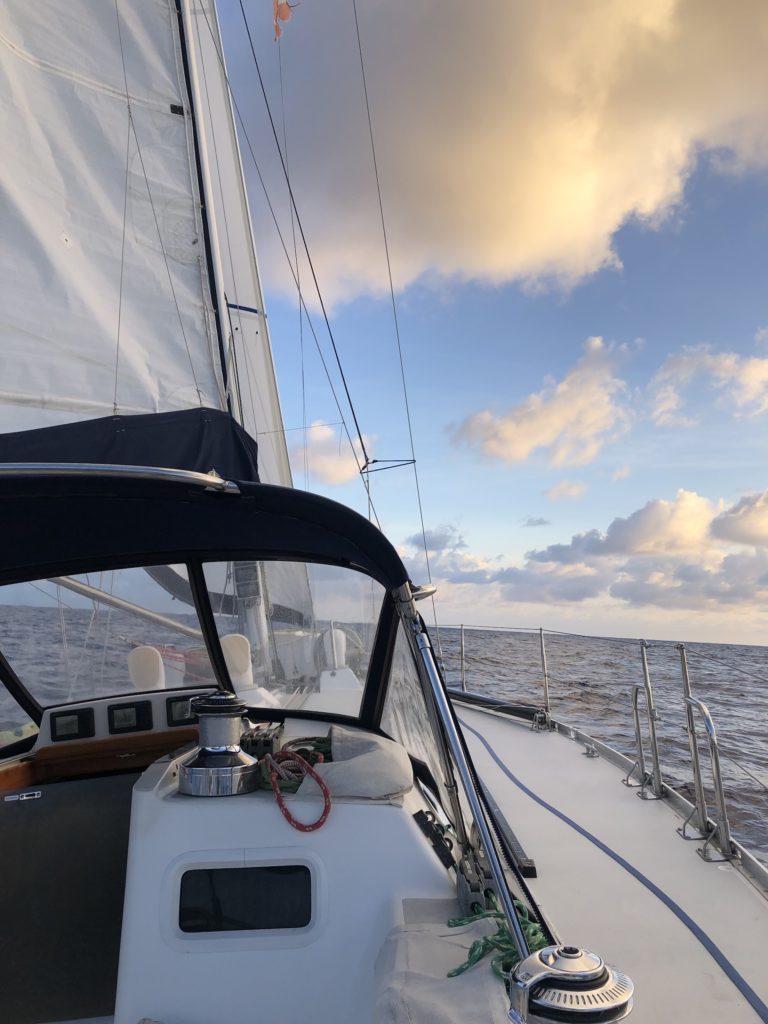
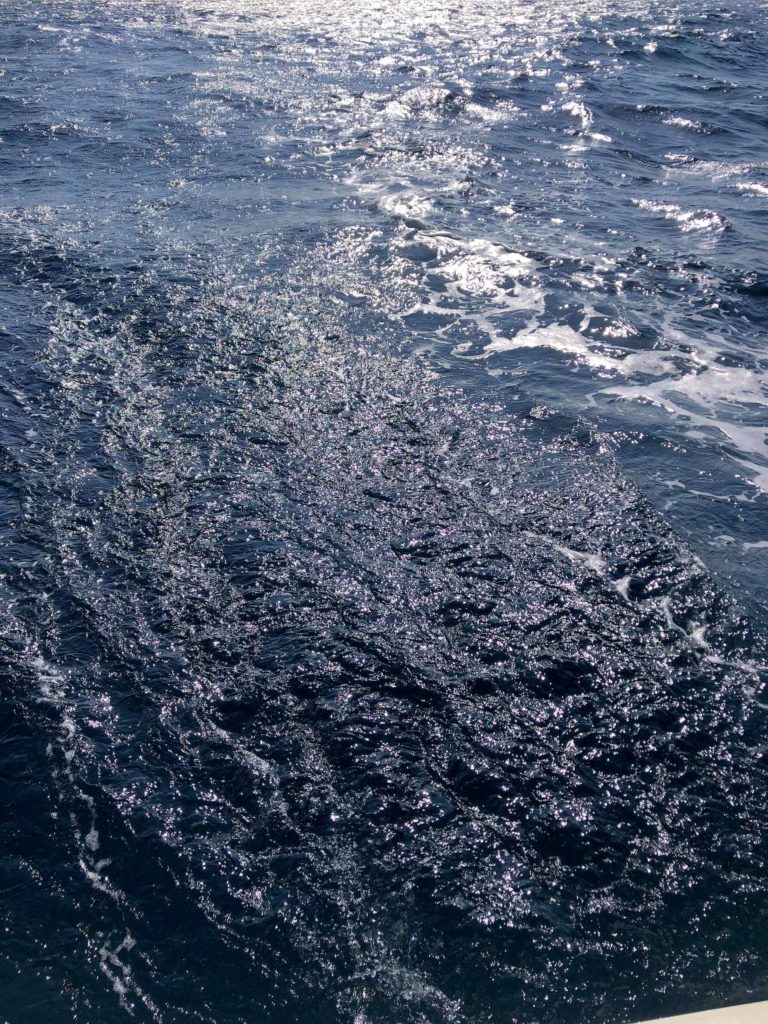
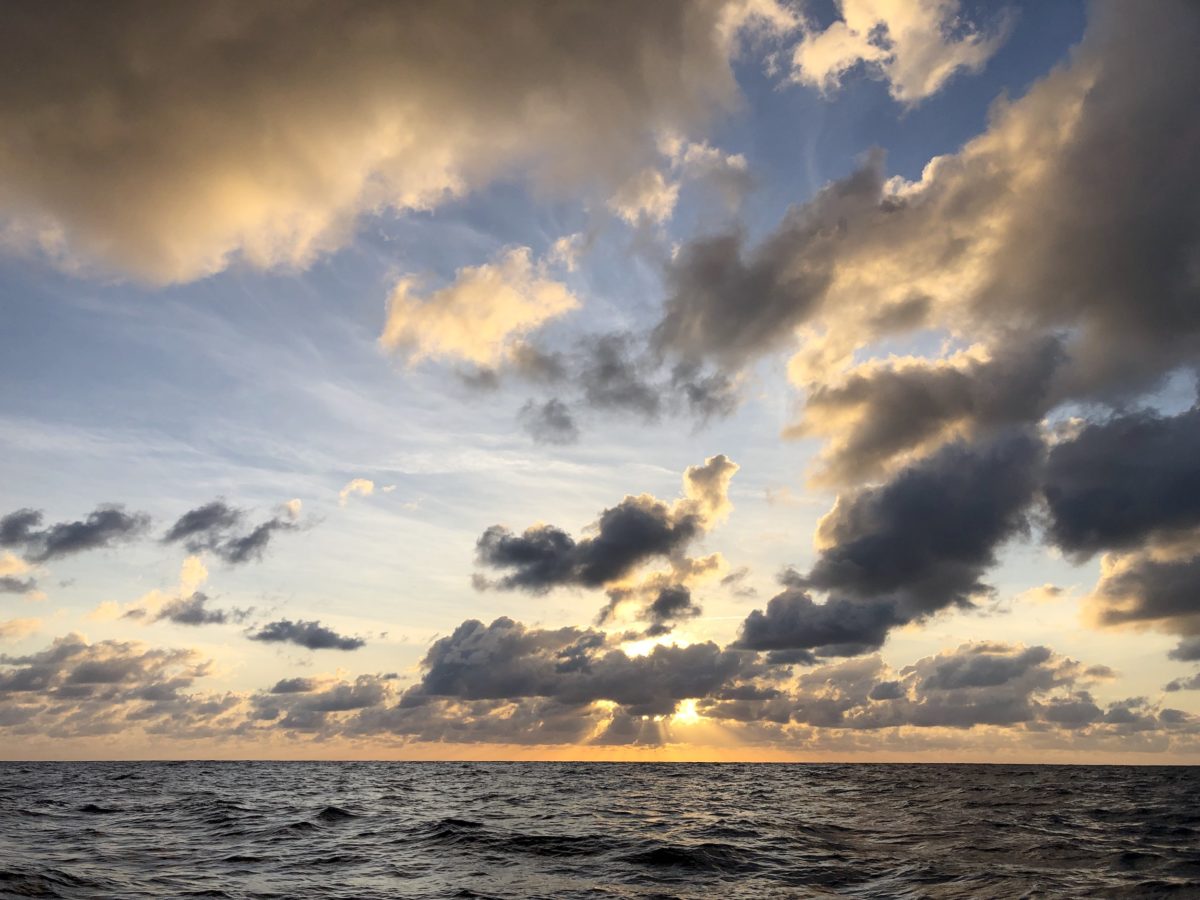
6 replies on “Go With the Flow”
This is just so amazing to me and very, very cool. You both are rock stars!! Are you working remotely or not working? This blog really makes me wish I didn’t get motion sick so I could experience that sense of freedom and peace.
Beautifully done guys
What an amazing trip! So glad you made it safely! I love the dolphin video!
You certainly have become quite the sailors you two crazy kids as we call you! Miss you!
Sounds like it was a glorious passage… just the right amount of reward and beauty to make you want to do it again. I’m proud of you for tackling your fear and giving it a go. The descriptions you give remind me of the joy of sailing and I miss it! Miss you both as well and hope you are close to your home port now. We are enjoying our cabin in northern MI. Still doing dishes but can you imagine walking more than 10 feet on a rainy day and sleeping in a bed that doesn’t move? Yup-we’re there.
What a fabulous record of your journey. You write so well Melissa, I could see it all. I really enjoy reading your blog.